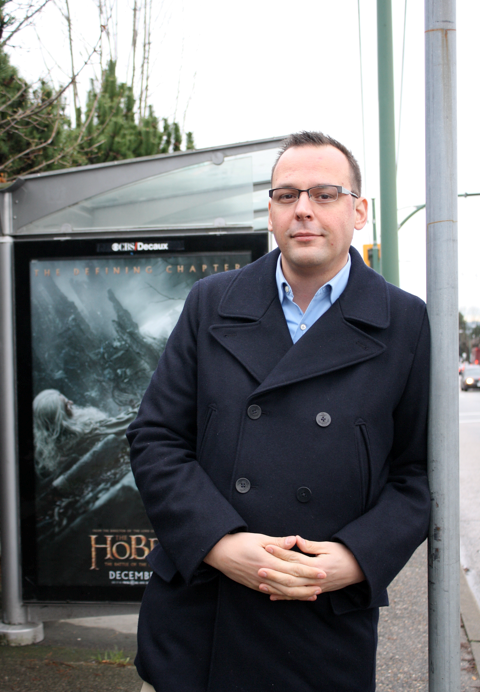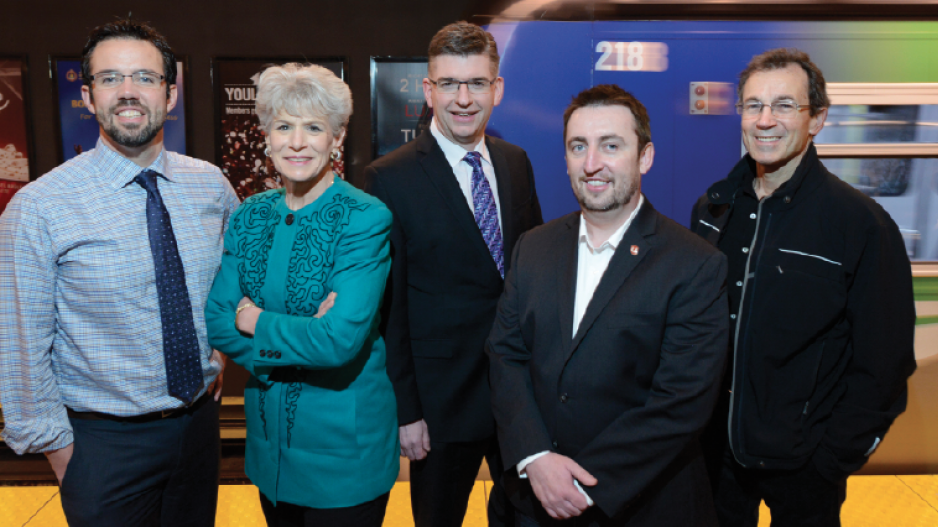The transit referendum campaign is heating up, with both sides carving out turf and emphasizing the uphill battle they face.
On the “yes” side is the Better Transit and Transportation Coalition (BTTC), made up of business groups, unions and environmental organizations. Most Metro Vancouver mayors are also supporting the yes side, as is the B.C. NDP. The governing BC Liberals have said they will support, but not fund, the yes side.
“I would suggest that the last time you may have seen this kind of [coalescing] of effort was around Expo 86, and I would suggest this is as relevant a generational decision as the impact of Expo 86,” said Iain Black, president and CEO of the Vancouver Board of Trade, which is a member of the coalition.
David and Goliath
In contrast to the politically heterogeneous yes side’s politically mixed tone, the “no” side is headed by the conservative Canadian Taxpayers Federation (CTF).

Also working on the no campaign is Hamish Marshall, a pollster and strategist who has worked in the Prime Minister’s Office and on campaigns for the federal and B.C. Conservative parties and the Wildrose Party of Alberta. His consulting firm, Newclear Productions, created the website for the blog EthicalOil.org, which painted environmental groups like Greenpeace as foreign-funded provocateurs bent on stopping Canadian oilsands and pipeline development.
Marshall said he was inspired to work on the campaign to “stand up for middle-class people who have to pay their taxes and drive to work every day.”
Jordan Bateman (pictured above), the CTF’s B.C. director, has cast the BTTC as Goliath; he’s David. He and Marshall said their campaign will be funded by individual donors; they expect the no camp to be outspent 50-1.
“This big rush toward groupthink by big business, big unions, big green groups, we think is bad for democracy,” Bateman said. “We’ll stand up for the no side and try to run a scrappy little campaign that puts our points out there.”
TransLink’s operational troubles will be the wind beneath the wings of Bateman’s campaign; yes-side campaigners will be asking voters to look beyond the transit authority’s recent shortcomings, which include two lengthy SkyTrain delays this summer and another delay in implementing the Compass Card program.
“They don’t like how the Compass Card has been implemented, and they don’t like how certain individuals are compensated, but to decide the future of our transportation system on two things will hurt us at the end of the day,” said Port Coquitlam Mayor Greg Moore.
“We need to look at the big picture.”
The issue has been simmering since 2013, when Premier Christy Clark announced a referendum would have to be held before any new source of funding for transit in Metro Vancouver was approved.
Meanwhile, with the region’s population expected to grow by one million people by 2030 and several funding options blocked by both provincial and local governments in the past several years, the question of how to fund transit has become more urgent.
While a regional carbon tax, sales tax, vehicle levy and road pricing were all options, Metro Vancouver mayors chose to ask voters to approve a regional 0.5% sales tax.
The money raised through the tax would partially fund a $7.5 billion transit plan that includes increased bus service, a subway along part of Vancouver’s Broadway corridor, a rapid rail system for Surrey and replacing the Pattullo Bridge. The mayors also expect the federal and provincial governments to provide money for the plan.
Mail-in voting will start March 16 and wrap up May 29.
As columnist Andrew Coyne pointed out on December 12 in the National Post, it’s the first plebiscite in Canada that asks voters whether or not to approve a new tax.
So: is it winnable?
Playing to win
Bill Tieleman thinks so. The left-leaning political strategist and commentator has headed successful referendums against the harmonized sales tax (HST) and the single transferable vote proposal.
Tieleman is working on the yes side on behalf of Unifor, the union that represents Metro Vancouver bus drivers and mechanics.
He argues that the HST was unfair and poorly communicated.
“[The HST] was very costly to individual consumers, and it was regressive. It shifted the tax burden off of big business and onto consumers.”
In contrast, Tieleman believes the $7.5 billion transportation plan put forward by TransLink’s Mayors’ Council last June has laid out clearly what residents will get in return for the sales tax increase.
While a regional carbon tax was also being considered, Moore said a sales tax is fairer because all residents, whether they are drivers or transit riders, will pay (as will tourists). Road pricing is still on the table, but as a longer-term option.
TransLink will be running an education campaign that is separate from the yes side. That’s unfair, said Bateman, who added TransLink will spend $4 million on its campaign.
But Moore said it’s a role that other transit authorities have played in cities like Los Angeles during similar plebiscites. He added that the figure is lower than $4 million and that TransLink will produce a detailed accounting of what it plans to spend.
BTTC members have said they will use their own resources and staff time to run their campaign.
TransLink not sending the right message: planner
Todd Litman, a Victoria-based transportation planner, hopes TransLink and the yes-side campaigners will move beyond “ideological” arguments – drivers versus transit riders – to promote the full range of economic and environmental benefits better transit will deliver.
“People will usually say improving public transit reduces air pollution, and it does, but of all the benefits that’s the more modest one.”
For instance, Litman said, cities like Vancouver have a 10th of the traffic fatality rate of automobile-dependent cities.
He said other factors that should be emphasized include reduced congestion and the cost savings to consumers who can reduce car ownership in cities with good transit.
“In those cities that have high-quality transit, the average household is spending $500 to $1,000 less per capita on transportation, plus these very significant reductions in traffic fatality rates and public health and parking cost savings. … But as far as I can see, nobody’s explaining it to the general public in that way.”
@jenstden




